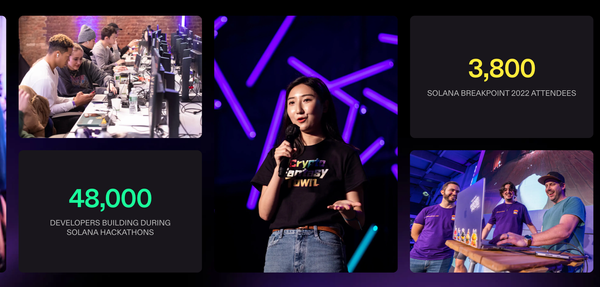Blockchain Glossary

Airdrop
Airdrop refers to a free drop of tokens directly to users’ individual wallets. This is a great opportunity to get free tokens from new projects. It is a marketing technique that new projects will use to get their initial users. Users will typically be required to register and follow the project’s social media accounts and in return will receive an airdrop of free tokens directly into their wallets.
Altcoin
Altcoin is short for alternate coin. It is a word that was coined in the initial stages of Blockchain to refer to any coin that is not a bitcoin.
Bitcoin
Bitcoin is the first decentralized blockchain project that was launched in 2009. It refers to the blockchain with the token that also has the same name. The bitcoin token is the first cryptocurrency and is the native token of the bitcoin blockchain.
Block
A block is the building block of a blockchain. It contains a record of transactions that happen in the blockchain. In other words, a block is a collection of transactions and a blockchain is a collection of blocks.
Blockchain
A blockchain is a decentralized public ledger of transactions that keeps a record of the exchanges of the native currency of the chain. For example, the Bitcoin blockchain keeps a record of all the bitcoin transactions. This record is in the form of a series of blocks and a copy of it is maintained in multiple computers across the world. Each transaction is validated using the proof of work consensus mechanism making it a completely decentralized, peer to peer network system.
Cold Storage
Cold storage refers to the offline storage of cryptocurrency. It is the safest way to store cryptocurrency since it is not connected to the internet and hence will not be accessible by hackers. Cryptocurrency has to be moved back online to be used in transactions.
Cryptocurrency
Cryptocurrency is digital money that is native to the internet. It has been developed using advanced cryptography techniques and hence the name cryptocurrency. A blockchain is a public distributed ledger that is the backbone of a cryptocurrency. Each chain has its own native token also referred to as cryptocurrency.
DAO
DAO is short for decentralized autonomous organization and is a popular form of organization structure in Blockchain based companies. Unlike traditional organizations, a DAO is governed by its community. All regulations are consensus based and are coded into software known as smart contracts.
DApp
DApp is short for distributed apps and refers to applications built on blockchains. A DApp is similar to a web app in terms of functionality, but unlike web apps that have centralized back end servers, DApps are built on decentralized peer-to-peer computers that make up the blockchain. Smart contracts built on the Ethereum blockchain are examples of DApps.
DEX
DEX is short for decentralized exchange and it is similar to a trading exchange. It is used to buy, sell and trade cryptocurrencies. However, unlike a traditional stock trading exchange that has a central intermediary, a DEX is a peer-to-peer decentralized exchange that relies on the blockchain technology rather than a central intermediary.
Decentralization
Decentralization refers to the process of removing a centralized intermediary from any system. It is the fundamental purpose of all blockchains. Blockchains are peer-to-peer networks that work on consensus between nodes, using algorithms like PoS or PoW, rather than a centralized intermediary.
Distributed Ledger
A distributed ledger is a database that is stored across multiple computers and kept in sync on all of the computers. A blockchain is an example of a distributed ledger.
Double Spend
Double spend refers to a scenario where a digital currency gets spent more than once. This is considered a risk with digital currencies and popular blockchains have systems in place to prevent this from happening.
Faucet
A faucet is a website or app that will release a tiny amount of cryptocurrency based on work done. It can be used for testing applications or providing rewards.
Fiat
Fiat refers to any government issued currency like US Dollars, Euro or the Japanese Yen.
Fork
Fork refers to a fork in a blockchain that may be needed due to changes to the existing protocol. A soft fork is temporary and a hard fork is permanent. Hard forks can result in 2 separate chains.
Gas
Gas refers to the fee that has to be paid for any transaction that happens in the Ethereum network. It is calculated based on the computing power needed to perform the transaction.
Genesis Block
Genesis block refers to the very first block in any blockchain.
Hard Fork
Hard fork, as the name suggests, is a fork that is permanent. For example, Bitcoin cash is a hard fork of the Bitcoin blockchain. Forking in software refers to maintaining different versions of the codebase. This usually happens when a software update is not compatible with a previous version(s) and therefore has to be run separately.
Hash
Hash is an algorithm, used in Cryptography, that takes input and returns a string of fixed length. This is used in Blockchains to verify transactions. The bitcoin blockchain uses the SHA-256 Hash algorithm.
ICO
ICO is short for initial coin offering and is used by new cryptocurrency projects to raise capital. Unlike the IPO, ICO is not regulated and you will need cryptocurrency tokens like Bitcoin, Ethereum or Binance coin and a crypto wallet to participate in an ICO.
Layer 2
Layer 2 is an additional layer that is built over a popular blockchain to increase its efficiency and functionality. The Bitcoin and Ethereum blockchains have functioning Layer 2 solutions.
Liquidity
Liquidity refers to the ease with which a cryptocurrency can be converted to cash.
Mainnet
Mainnet refers to a live, functioning blockchain that processes actual transactions of the token of the chain. Bitcoin, Ethereum of examples of Mainnet protocols.
Metamask
Metamask is a crypto wallet that can be connected to the Ethereum blockchain. It can be configured using an Ethereum address and can be accessed from a browser.
Mining
Blockchains serve as public ledgers since they record all the transactions that occur on the chain. Each transaction needs to be validated and the process of validating a transaction and recording it on the blockchain’s ledger is referred to as mining. Miners receive a reward in the form of tokens for recording a transaction and hence the process is referred to as mining.
Node
A node is a computer on the blockchain that participates in performing actions and transactions specific to the blockchain.
Private Key
A private key is used to secure a blockchain address. It is a large hexadecimal number generated using cryptography and is similar to a password that can be used to secure cryptocurrency. A private key should not be shared with anyone.
PoS
Proof of Stake is a mechanism that is used to validate transactions before they can be entered into the blockchain. A blockchain is a distributed ledger and every transaction needs to be validated by validators before it can be registered in the blockchain. In PoS systems, validators will need to stake coins as a collateral in return for a chance to validate transactions on the blockchain.
PoW
Proof of Work is a mechanism that is used to validate transactions before they can be entered into the blockchain. A blockchain is a distributed ledger and every transaction needs to be validated by validators before it can be registered in the blockchain. In PoW systems, each node in the blockchain will need to solve Mathematical problems to show proof of work and can then validate transactions on the blockchain.
Public Key
A public key on a blockchain is used to receive tokens into the wallet. The wallet is secured by a private key and will have an address that is different from the public key.
Seed Phrase
A seed phrase is a set of words generated during the creation of a bitcoin wallet. The seed phrase should be stored safely and should not be shared with anyone. A seed phrase can be thought of as the password to the wallet, while private keys are used to sign individual transactions. Private keys can be derived from the seed phrase.
Sidechain
A sidechain is a blockchain that is connected to a main blockchain using a 2-way peg.
Smart Contracts
A smart contract is a software program stored in a blockchain that contains specific agreements between a buyer and a seller. The contracts are automatically executed whenever certain pre-set conditions are met.
Stablecoin
Stablecoins are cryptocurrencies that are pegged to a stable asset. The idea is to have a currency with the features of a cryptocurrency without the volatility of cryptocurrencies.
Staking
Staking is a required action to be performed by validators in a proof of stake blockchain. Validators are required to stake a minimum amount of tokens before they can verify or validate transactions on the blockchain.
Testnet
Testnet refers to a version of the blockchain that is used for testing purposes. It has all the functionality of the main chain and may have additional features that are under test mode.
Token
A token is the native currency of the respective blockchain.
Validator
Validator refers to individual nodes that are responsible for verifying or validating the transactions on a blockchain.
Wallet
A blockchain or crypto wallet is a digital wallet that is used to store cryptocurrencies. It has an address and can send and receive cryptocurrencies.
Web3
Web 3 refers to the third iteration of the internet or the world wide web. It is powered by the blockchain technology and is evolving around cryptocurrencies, decentralized apps, DAOs and NFTs.




